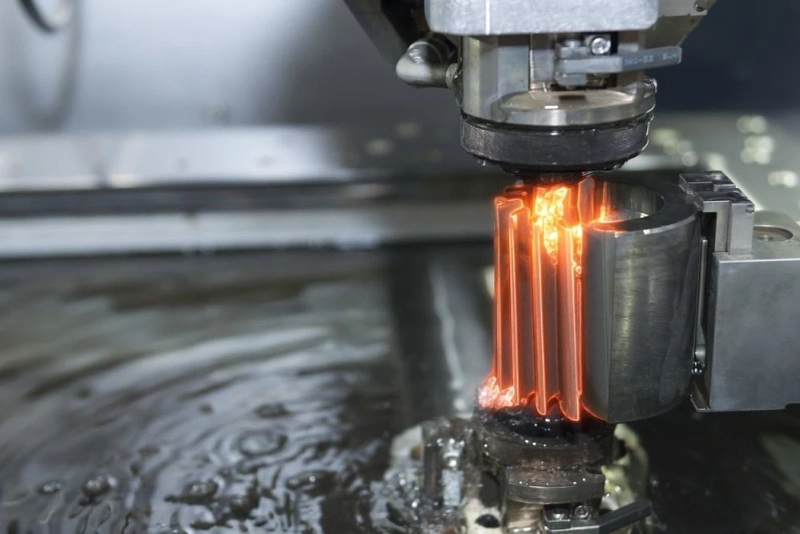Electrical sparks are used in the manufacturing process known as electrical discharge machining (EDM) to shape metal. EDM is sometimes referred to as "spark machining" because of these sparks. In this technique, the required shape is created and detached from the metal sheet when current discharges or sparks occur between two electrodes. Where the sparking takes place, cuts are made into the metal.
Wire EDM and sinker EDM are the two primary types of EDM, and there are several other less popular techniques as well. A wire serves as the tool electrode in wire EDM. In order to prevent material from degrading from the wire itself, the wire is wound between two spools and, when in motion, the active component of the wire continuously switches.
What is the EDM Process?
A wire is run through a metal portion submerged in dielectric fluid during the EDM process. Sparks are produced by passing an electric current through the component, and these sparks assist the component to take on the required shape.
The strength of the dielectric fluid grows as the space between the electrodes gets closer together, increasing the intensity of the electric field. Under these circumstances, the current flows between the two electrodes more readily, causing each spark to result in the separation of the component from the metal sheet.
Manufacturers will occasionally carry out a procedure known as "flushing," utilizing a dielectric liquid to help remove any residual material or waste from the finished product after the currents have passed through and the required shape has been attained.
BENEFITS AND APPLICATIONS OF WIRE EDM
The wire EDM machine, also known as a “cheese cutter,” offers several unique advantages, making it a popular choice for manufacturers across various industries.
EDM Benefits
Without using a lot of cutting force, wire EDM machines can precisely remove the extra material. Since the procedure is frequently automated, there is little risk that the workpiece would be harmed. Additionally, since wire EDM machines can work with hard materials, additional post-machining thermal treatments are not required. As a result, the formed part experiences little to no heat stress, which reduces the possibility that its surface would deform.
EDM Applications
The most widespread application of wire EDM is in the production of molds and dies, particularly for blanking punches and extrusion dies. EDM is most frequently used to produce metal tools and components, while it can be utilized for everything from prototypes to large production runs. The method works best in situations when there is little need for residual stress.
Manufacturing parts and components for the electronics, aerospace and automotive industries is where EDM is most frequently employed.
0


